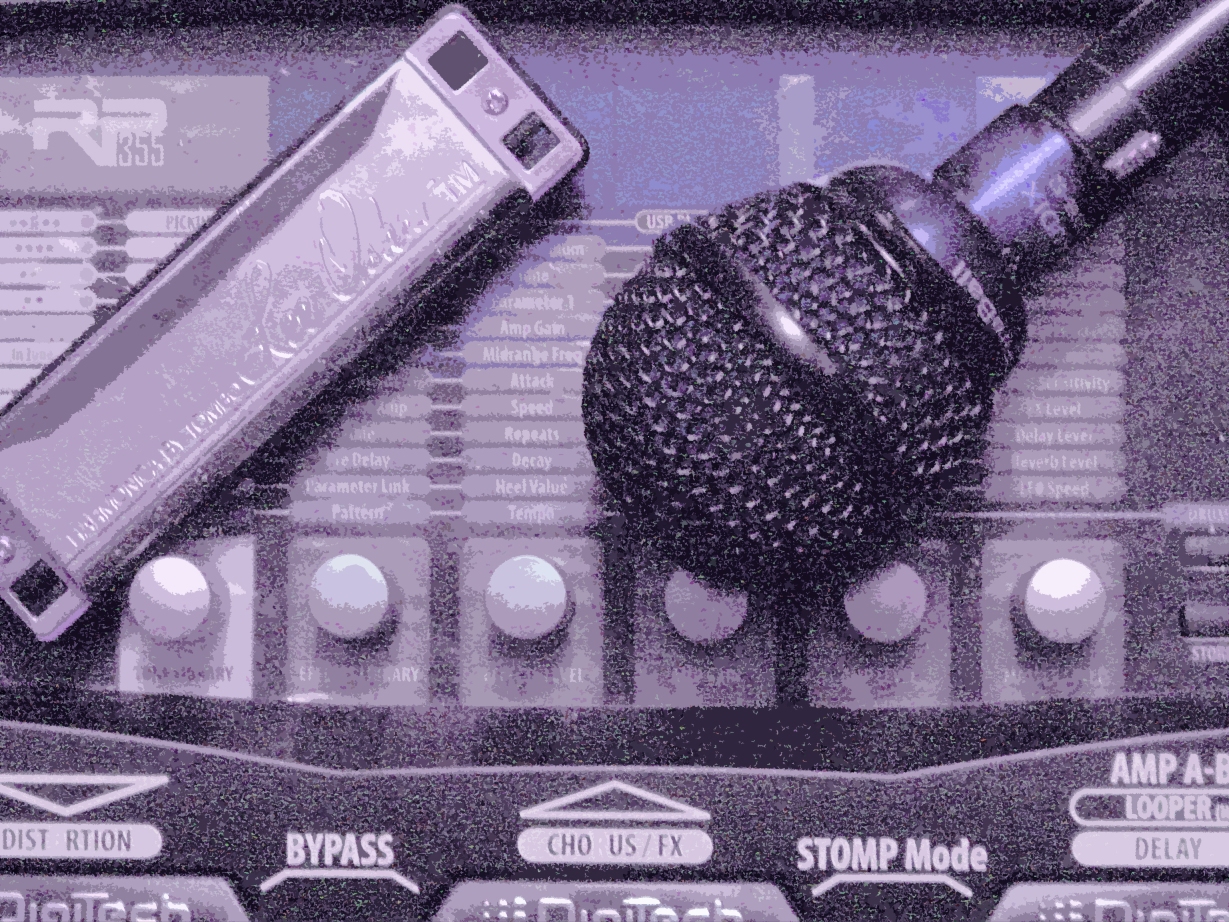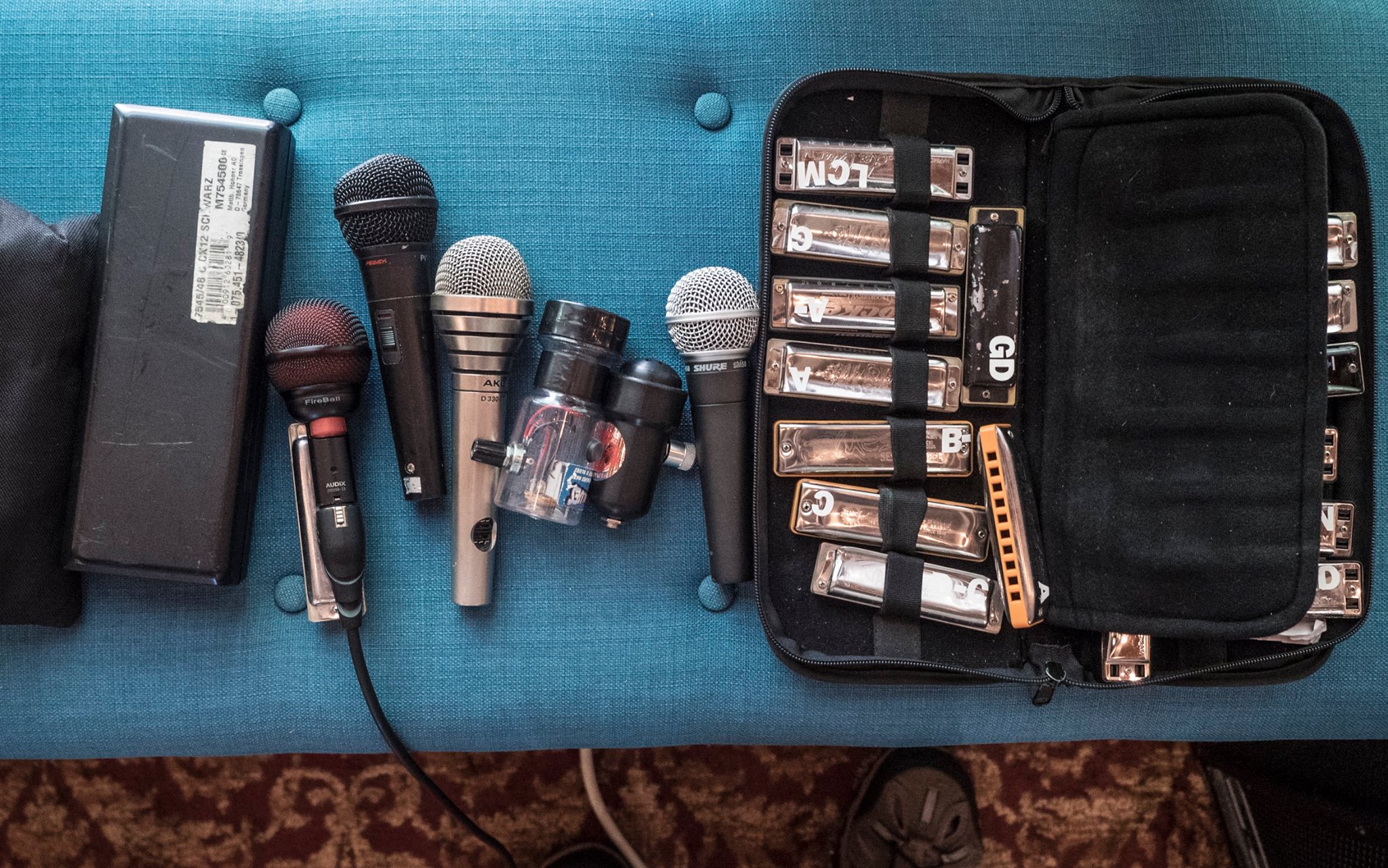
Breathing Exercises for Beginners (and anyone else)
Note: this information was originally published in a post to Harp-L in 1996.
Recent posts to the list have requested breathing exercises. Three that have worked well for me are described below.
1) The purpose of this exercise is to give the player a “feel” for proper — i.e. diaphragmatic — breathing. It’s sometimes difficult for players to recognise and distinguish between chest and diaphragmatic breathing. This exercise will introduce the player to the physical sensation of breathing from the diaphragm.
Stand straight up with arms at sides. Slowly raise yourself on tiptoe, breathing in, and raise your arms over your head. Remain on tiptoe for a moment with arms raised overhead, then slowly lower your arms to your sides while breathing out. Notice the feeling in your gut during this exercise; that feeling is your diaphragm working.
Diaphragmatic breathing is important to sustaining an even tone for the longest possible period of time, and also makes a player’s tone “big” and resonant even at very low volumes. It’s the basic breathing technique for most musical situations.
The next two exercises are designed to give the player control over the tone of sustained notes. They require diaphragmatic breathing.
2) Hold a note — any note, inhale or exhale — absolutely steady at medium volume for as long as possible. 15 seconds is a good minimum to shoot for.
3) Take any note, inhale or exhale. Start the note at the lowest possible volume. Gradually increase the volume to the highest volume you can manage.
Lower the volume to the starting volume gradually, at the same rate you used to increase the volume, so the overall “curve” of the volume is a gradual ramp from minimum up to maximum and down to minimum again.
The latter two exercises were taught to me by a saxophone teacher over twenty years ago, and have been very useful to me since then. I return to them whenever I find my tone sounding thin or wobbly, and they never fail to fix the problem. I hope others find them as useful.
Related Posts
10 Comments
Leave a Reply
You must be logged in to post a comment.
WHAT’S NEW
Categories
- Audio/Video
- Blog
- Blue Future
- Digitech RP Tricks and Tips
- Discography, CDs, Projects, Info, Notes
- Featured Video
- For the Beginner
- Gallery
- Hunter's Effects
- Hunter's Music
- Huntersounds for Fender Mustang
- Meet the Pros
- More Video
- MPH: Maw/Preston/Hunter
- My Three Big Contributions
- Player's Resources
- Pro Tips & Techniques
- Recommended Artists & Recordings
- Recommended Gear
- Recorded Performances
- Reviews, Interviews, Testimonials
- The Lucky One
- Uncategorized
- Upcoming Performances
- Zoom G3 Tips and Tricks


Hi, Mr. Hunter.
How much time do you recommend to train these exercises?
Thanks.
P.S. I’ve discovered your web recently. Great, great stuff being cooked here.
Ten minutes a day is plenty to start. Over time, as you learn to breathe this way as a matter of habit, you won’t need to practice the technique so much–just a few minutes as a refresher when you find your tone is beginning to thin out.
I can only last 10 seconds
@Ronnie: make sure you’re breathing from the gut, not the chest.
Then again I’m 63 and a heavy smoker.
@Ronnie: Well, you can’t do anything about the 63 part, but I think if you drop the smoking you’ll find that the situation improves from the harmonica-playing point of view.
Thanks Richard, but I’ve been smoking over 50 years, bit too late to stop, Bob Dylan can rest easy now.
My comment is about Robert Bonfiglio’s incredible breath control displayed on his recording of Meditation from the opera Thais. He must breathing circularly for there is nor breaks in his phrases. the sound is continuous!! I hear it but I really can never believe it’s happening. Of course, this is only a technical facility and relatively small part in his musicality. He’s really one of a kind.
@Joe: Bonfiglio may be the most technically accomplished harmonica player in the history of the instrument.